Laptop Mag Verdict
The Ray-Ban Meta smart glasses weren’t first through the door, but they are the first to truly flourish after crossing the threshold, and it’s not hard to see why. From form to function, Meta’s glasses are a fantastic companion that’s well worth the upgrade from your regular hum-drum frames.
Pros
- +
Great audio, solid video and photo quality
- +
Meta AI is surprisingly handy (and keeps getting better)
- +
Excellent mic array and voice recognition
- +
Impressive video stabilization
- +
Charging case is a blessing
Cons
- -
Awkward photo framing
- -
Poor battery life
Why you can trust Laptop Mag
Google Glass was a revolutionary product. Not only for what it hoped to achieve, bundling together an everyday wearable that you could dictate texts to, capture photos and video with, or take calls through, but also for the amount of ire it inspired in people following its unveiling.
Hi, I’m Rael Hornby, resident Laptop Mag reviewer of AR and VR tech and probably someone that would have been considered a “glasshole” back in 2013. Thankfully, some ten years later, I’m happy to say that smart glasses are making their long-awaited comeback.
Leading that charge are the Ray-Ban Meta smart glasses. While these stylish spectacles might seem a long way away from the stellar Meta Orion holographic glasses showcased at Connect 2024, you’re looking at the launching pad of how Meta gets there — and an impressive improvement over the Ray-Ban Stories that came before.
So, what makes these glasses so special? Well, there are several factors at play here. While they may look like a simple pair of frames on the outside, they offer so much more. Let’s take a closer look at Meta’s smart glasses.
Ray-Ban Meta Smart Glasses: Price and availability
The Ray-Ban Meta smart glasses are available starting from $299 / £299. Meta’s smart glasses come in three styles: the classic Ray-Ban Wayfarer and the new Headliner and Skler frames. The price of each pair will vary depending on style, color, and lens, and even more so if you’re seeking prescription lenses.
This is a similar price to the Ray-Ban Stories that preceded this generation of smart glasses, and while it’s much more than you’d pay for a regular pair of Ray-Bans, these are no regular pair of Ray-Bans.
Factoring in everything you get beyond the style, build quality, and branding of the frames, this isn’t an outlandish price for a pair of smart glasses — especially when taking into account the impressive charging case that comes with it.
Ray-Ban Meta Smart Glasses: Specifications
| CPU: | Qualcomm Snapdragon AR1 Gen 1 |
| Storage: | 32GB |
| Camera: | 12 megapixel, ultra-wide |
| Resolution: | 3024 x 4032 (images) |
| Row 4 - Cell 0 | 1440 x 1920 (video, 30 fps, cropped for stabilization) |
| Audio: | Dual open-ear speakers |
| Weight: | 48.6g (1.71 oz) to 50.8 grams (1.79 oz) |
| Protection: | IPX4 |
| Battery: | 154 mAh, up to 4 hours battery life |
Ray-Ban Meta Smart Glasses: Design
Meta’s partnership with EssilorLuxottica brings with it the iconic style of the Ray-Ban Wayfarer, a design often imitated but never duplicated in the smart glasses realm. You’ll see stylings of the same shape on many AR glasses, but this is the real deal. Meta’s smart glasses exude every drip of style and quality as any in EssilorLuxottica’s catalog.
Cast a casual eye at these robust frames, and you may struggle to tell them apart from a regular pair of Ray-Bans — until you notice the LED and camera lens that now takes up residence where the iconic frame’s rivets would typically sit.
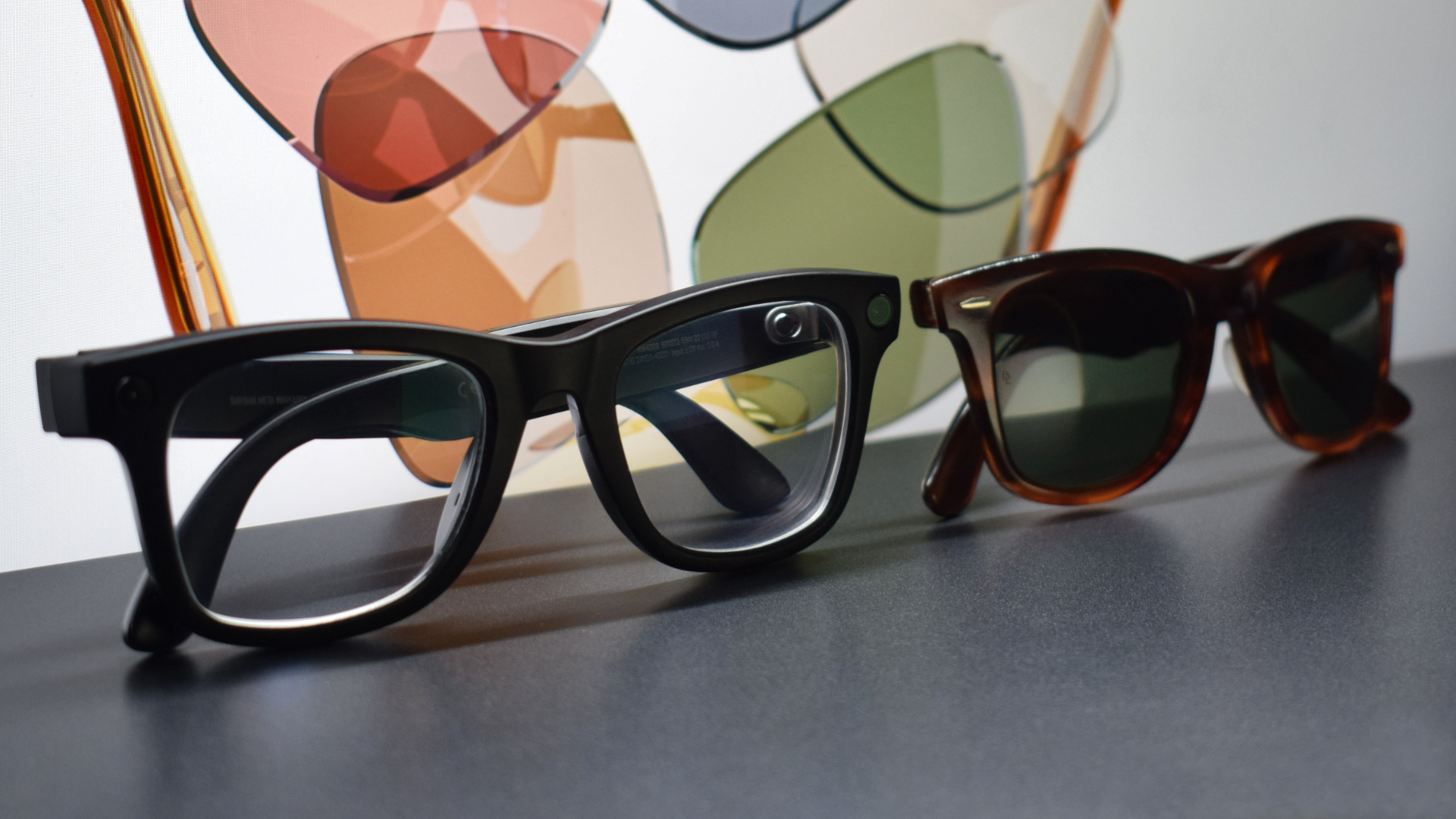
Meta’s smart glasses exude every drip of style and quality as any in EssilorLuxottica’s catalog.
The temples, which each house the iconic Ray-Ban logo, are less obviously belonging to a pair of smart glasses, potentially owing to the many different sizes that Ray-Ban has applied to its Wayfarer frames over the years. The only giveaways here are a single button at the top of the right temple and two subtle speakers further back that sit just before the temple tips.
Their position is mirrored on the underside of the temples by two more speakers with pinhole microphones close by — which make up two of the three visible microphones (the other is located on the nose bridge of the glasses) which are part of a wider five-mic array.
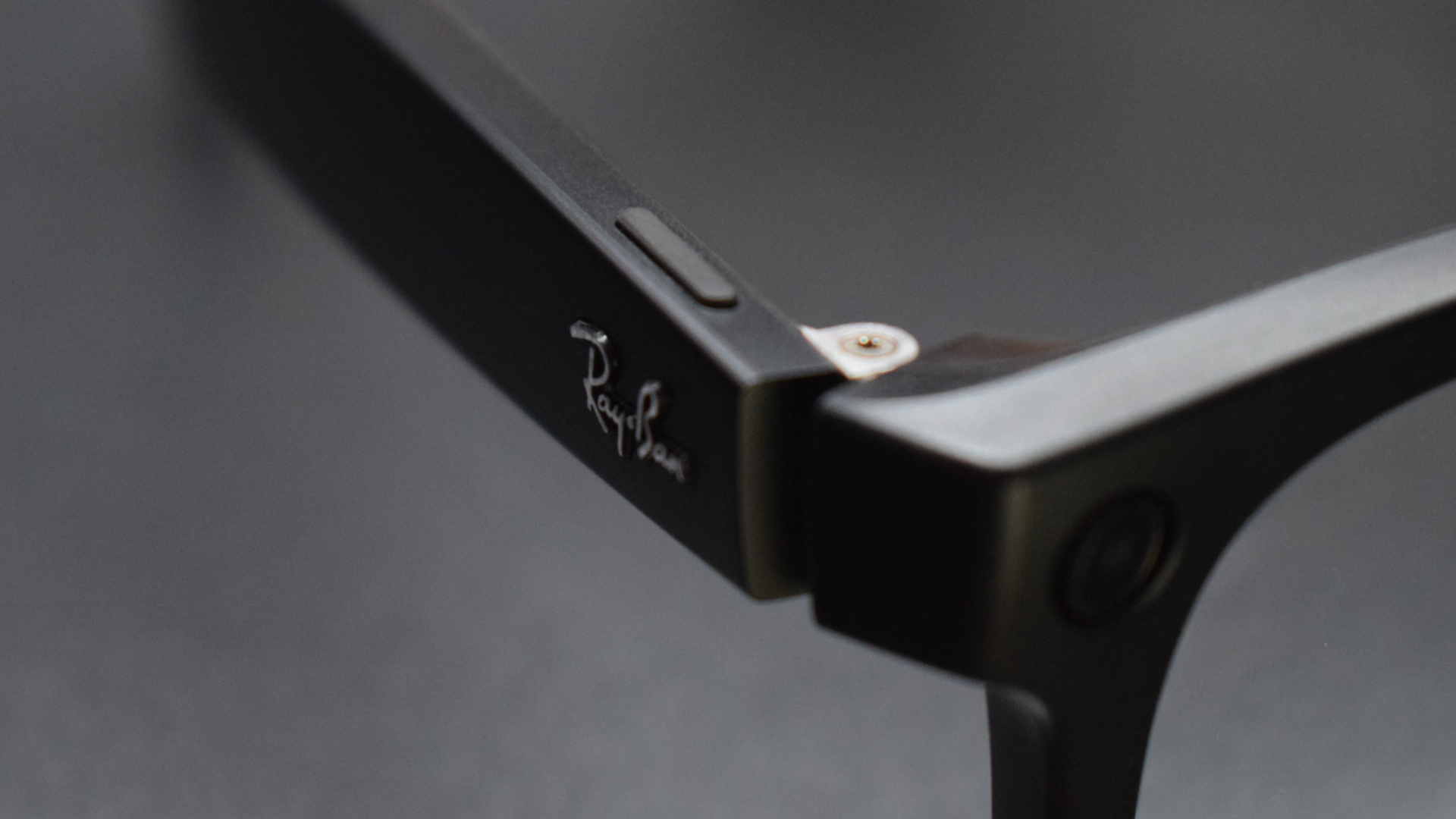
Including these speakers adds to the thickness of each temple, but not to the point of being distracting. They still fit comfortably over the ears, and there’s no noticeable weightiness from this part of the frames, either. Along much of the available right temple is a touch sensor that allows you to tap, swipe, and hold for various interactions you can assign in the Meta View mobile app.
Meta’s frames have the same balance point along the temples that my regular Ray-Ban’s have, meaning it’s the bridge of your nose that shoulders most of the 50.8 grams weight. To put it into perspective, that’s about the weight of two AA alkaline batteries spread fairly evenly across the front and sides of your face. Given that my regular Ray-Bans weigh ~45 grams, this change was barely perceivable.

Perceivable changes include a switch from the Wayfarer intersecting hinges to a more cylindrical design, creeping further up the temples to show a Meta logo on the right-hand side and a power switch on the left.
If you size your glasses right, you’ll be able to reach this switch without taking off the frames. This is a subtle and simple way of cutting back on battery drain when you don’t need any of the smart-tech bells and whistles the Ray-Ban Metas offer.
Ray-Ban Meta Smart Glasses: Audio
Open-ear speakers and great audio don’t always go hand-in-hand. In fact, they’re often seen traveling in different directions and spitting on the ground at the very mention of one another. However, this is not always the case. While the TCL RayNeo Air 2S AR smart glasses had their faults, open-ear audio was not among them.
Thankfully, the same can be said here. While there are no EQ adjustments available within the Meta View app, or preset sound profiles to switch from, the Ray-Ban Meta smart glasses come out of the case ready to go with a fresh tone and a well-rounded sound to them — even if it is lacking a little when it comes to bass.
Audio quality is more than serviceable — in fact, it’s pretty excellent. Thanks to a starkly apparent spatial element, the sound is crisp, clear, rich, and solidly immersive. As mentioned, there’s a noticeable drop-off in bass, but this has been a recurring experience when it comes to open-air audio for me.
That said, cranking up the volume can help alleviate many of your gripes, giving the full scale of the audio more chance to swamp your ears.
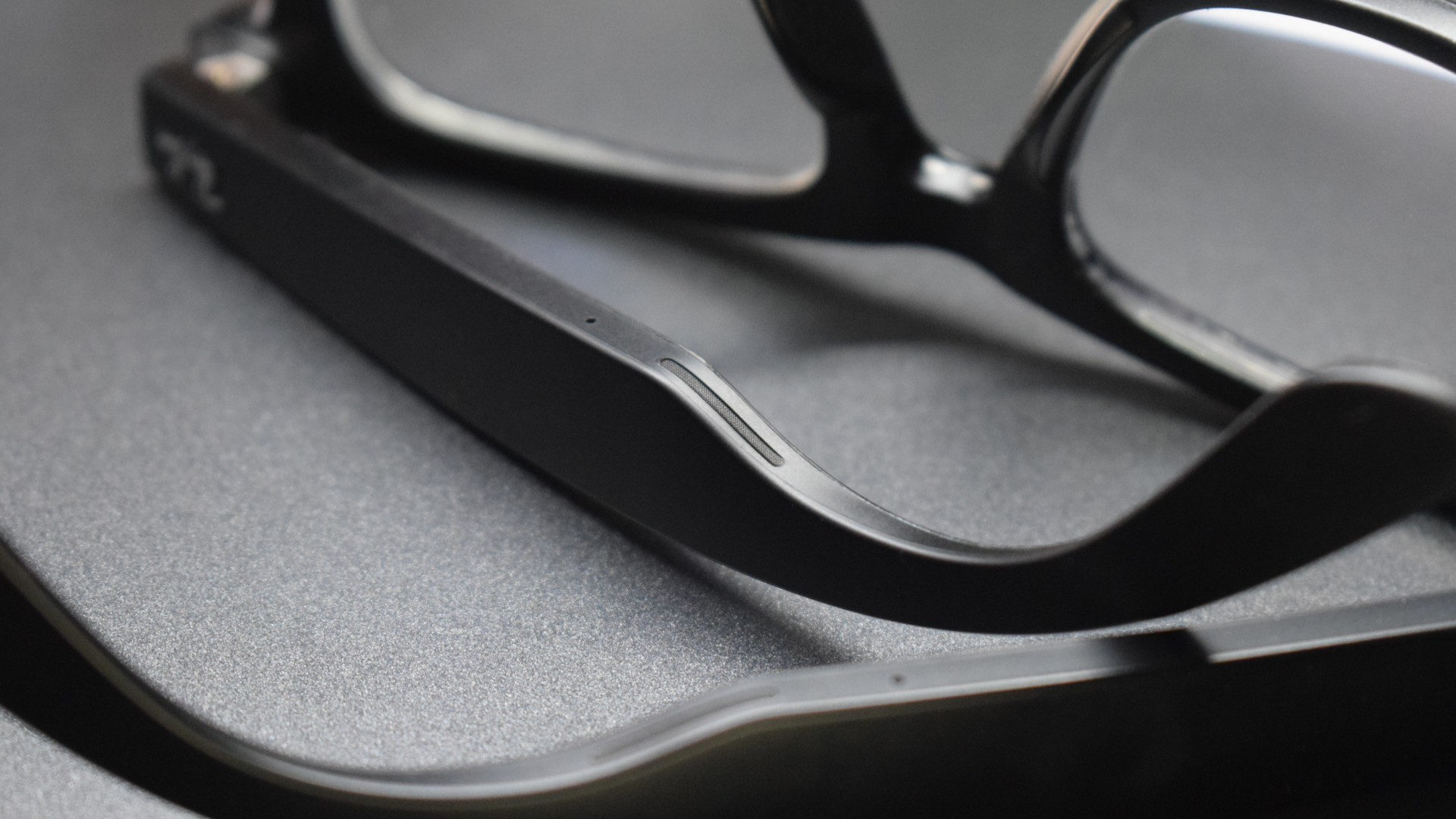
Audio quality is more than serviceable. In fact, it’s pretty excellent.
This all comes from the improved speaker setup, which improves the bass from the Ray-Ban Stories that came before and boosts the peak volume by up to 50% while reducing audio bleed.
In this context, that means how much sound leaks from the open-ear speakers into your surroundings. This is very noticeable at max volume, but it's not that noticeable at 40-50% — especially in more crowded public spaces.
Individual voices have much less bleed to them, so making a call is a bit more discrete. It’s once again incredibly crisp audio, but more than that, the five-mic array of the Ray-Ban Meta’s captures your voice beautifully. I mean, beautifully.

Whether you’re taking a call in a crowded environment or calling on Meta AI while music plays loudly through the temple speakers, the Ray-Ban Metas offers incredibly precise audio capture. You don’t even have to speak up much for the glasses to register you calling on the AI; a mumble or a whisper can do it, even in noisy environments.
It’s fantastic for discretely calling in a snapshot or asking Meta AI to quickly send a reply to a message on your behalf. Speech recognition has been mostly flawless during my time with the glasses. Voice commands and inputs work a treat, whether I ask Meta to skip a music track or send my friends a poem about trains—you know, the basics.
Ray-Ban Meta Smart Glasses: Camera
There’s something especially charming about the Ray-Ban Meta’s camera. While only 12 megapixels (MP), the quality is impressive. It’s not going to blow any of your 24-50 MP smartphone sensors out of the water any time soon, but there’s enough here to be happy with the results of your on-the-fly snaps.
Just make sure you’re standing still long enough to capture that moment in time, and don’t be fooled by the initial chirp of the glasses as it registers your request. I’ve had to learn this lesson repeatedly, only realizing the error of my ways when the shutter sound follows. This leaves me to shamefully mourn another 12 megabytes of my storage, now dedicated to the turning of my head away from the thing I originally wanted to take an image of.

There’s something especially charming about the Ray-Ban Meta’s camera.
Not that this would be an easy thing to accomplish, anyway — with no available viewport, photography through the Ray-Ban Meta smart glasses is tricky to adjust to.
You can’t ever take a photo with complete confidence that you’ve managed to capture what you thought you did until you pull out your phone and check the app. That almost defeats the purpose of having a camera on your face, if I’m honest.
That said, you still get some interesting results. They’re a little bit quirky and a little bit misaligned. They’re images that don’t quite line up with how you remember things because although it's supposedly from a first-person perspective, it somehow feels like it was the perspective of a person standing just behind you and peering over your shoulder.
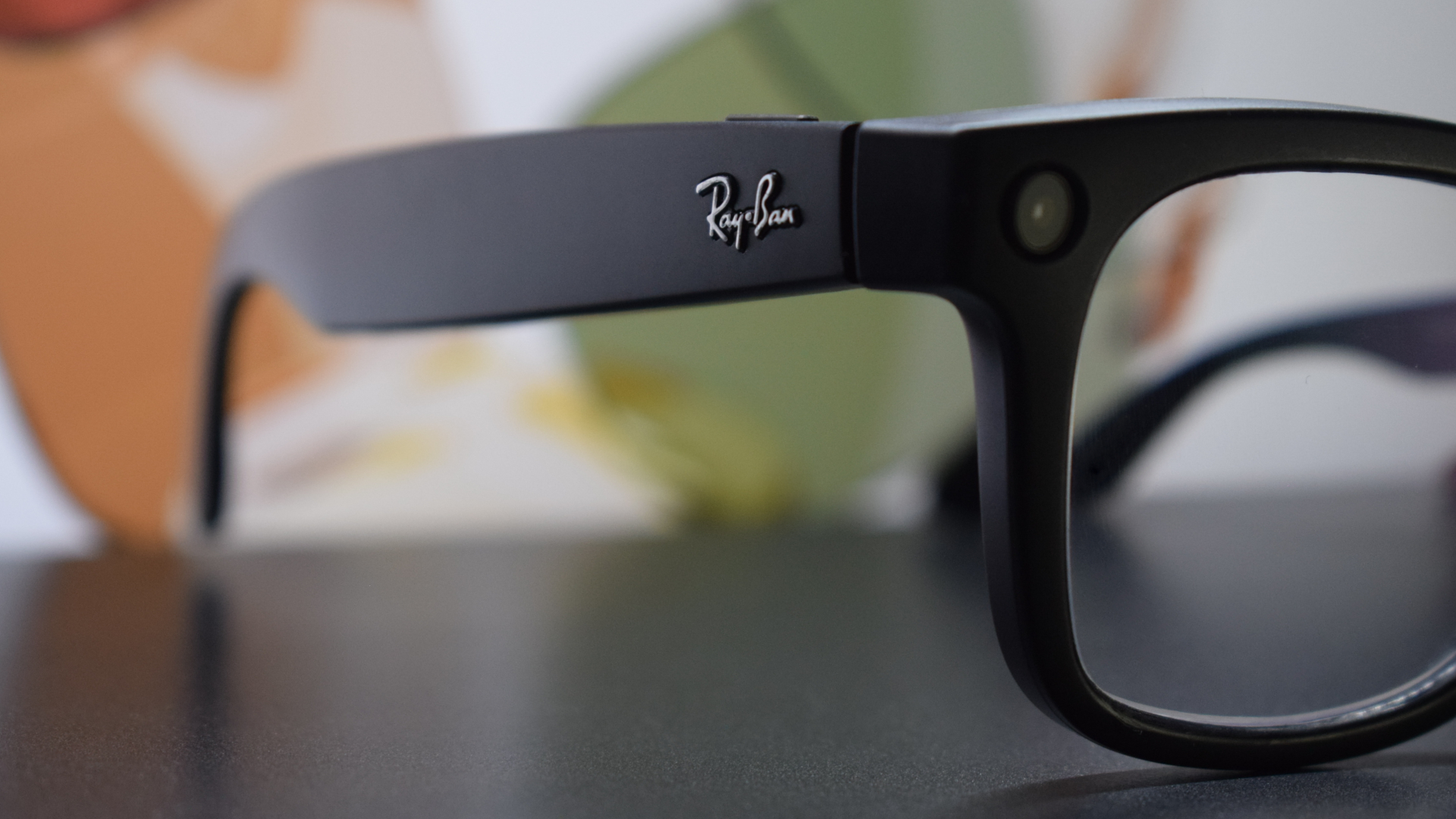
Picture and video quality were only half of my concerns with Meta’s smart glasses. The other was how people would react to the camera itself in everyday life.
It’s almost its own genre of photography, whereby the aim is to capture a false memory. Still, between the 3:4, made for social media, aspect ratio, and liminal perspective shift, you can’t deny that there’s “something” about the off-kilter results that is quite charming. Plus, you can often crop what you don’t like; the 3024 x 4032 resolution of each image mixed with the ultra-wide angle can be pretty forgiving, at least.
On the other hand, video, while retaining some of that liminal weirdness, feels somehow much easier to manage, thanks to a healthy dose of image stabilization that will eat away at the original 1440 x 1920 resolution.
Still, the results are pretty impressive, even if they are only captured at 30 fps and limited to 3 minutes at a time. As a bonus, they don’t nearly look as much like you’re watching declassified body cam footage as you’d think they would on playback.

However, picture and video quality were only half of my concerns with Meta’s smart glasses. The other was how people would react to the camera itself in everyday life.
Ironically, while the inclusion of a camera had many an undergarment in a twist with Google Glass, most don’t seem to notice (or care) about their appearance on the Ray-Ban Meta smart glasses. It’s often forgiven as part of the design, and those who have noticed simply said, “Cool.”
It seems we’ve crossed some cultural divide, and having cameras in our presence is now commonplace as opposed to something beyond the norm. We livestream ourselves and snap selfies with reckless abandon. Pulling out a smartphone to record any moment of human joy, misery, or distress is practically commonplace.
The fact you’re wearing a camera on your face only signals who’s prepared to catch someone else's moment of celebrity as they shout, “You can’t park there, mate,” while chortling at the scene of a devastating car crash.
Ray-Ban Meta Smart Glasses: Camera samples

Images taken with the Ray-Ban Meta smart glasses are clear and vivid. In this image of a public park, the colors are well saturated, with a wide range of greens visible across the shot.

In this busy high street photo, subjects in motion remain crisp, and shaded areas remain well-lit and balanced with the rest of the scene. The Ray-Ban Meta smart glasses perform their best in naturally lit scenes like this.

The quality of interior images can vary depending on lighting. In this shot from a local museum, the Ray-Ban Meta smart glasses boost the available light, but that comes at the cost of muddy details and increased grain.
Videos are similarly crisp, and showcase some solid image stabilization at the cost of resolution. Once again the Ray-Ban Metas capture very clear and accurate audio in the process, with the results outperforming what you'd expect from such a tightly packaged product.
Ray-Ban Meta Smart Glasses: Meta AI
“Trains chug along the track, carrying dreams and freight, a symbol of journey and a marvel of might, connecting towns and cities, day and night” — Meta AI
The intersection of AI and messaging apps is a privacy nightmare for some. However, I’ve learned to overcome my fears and fully embrace our artificial overlords, especially as it means I can annoy all of my friends by sending them random poems about trains, Bigfoot (capitalized because it’s real), canoes, and the state of Utah.
Never has generative AI made more sense to me than the ability to simply call out “Hey Meta” before spouting some truly unhinged nonsense, asking for a reply that rhymes, and selecting my unwitting victim from my WhatsApp contacts.
Taking some of the anxiety out of letting an AI message people on your behalf, Meta AI will repeat your message back to you before asking if you’re sure you want to send it. Allowing you to avoid any potential voice recognition disasters.
Never has generative AI made more sense to me than having the ability to simply call out “Hey Meta”
Aside from granting me a special new way to lose friends and alienate people, Meta AI actually comes in pretty handy. And it’s getting handier still, thanks to a series of feature-enhancing updates.
During a walkabout at my local museum, Meta AI was on hand to help me recognize various fish, and instead of reading the plaques below each display, I was able to ask Meta AI to “Look and see what this says” before going about my business and receiving a summary of what was captured. It was a bit like having a virtual tour guide with me at all times, albeit slightly embarrassing to walk about in public, muttering in the general direction of a bunch of plastic dinosaurs.
Meta AI can also translate foreign languages, identify various things within the framing of your images, upload images on your behalf to social media, and even fetch information about the weather. You can even ask Meta AI to fetch a recipe from ingredients in your fridge or help you piece an outfit together. These replies can also be followed up within a brief window of time, turning a small engagement into an actual conversation — and it all flows well together.
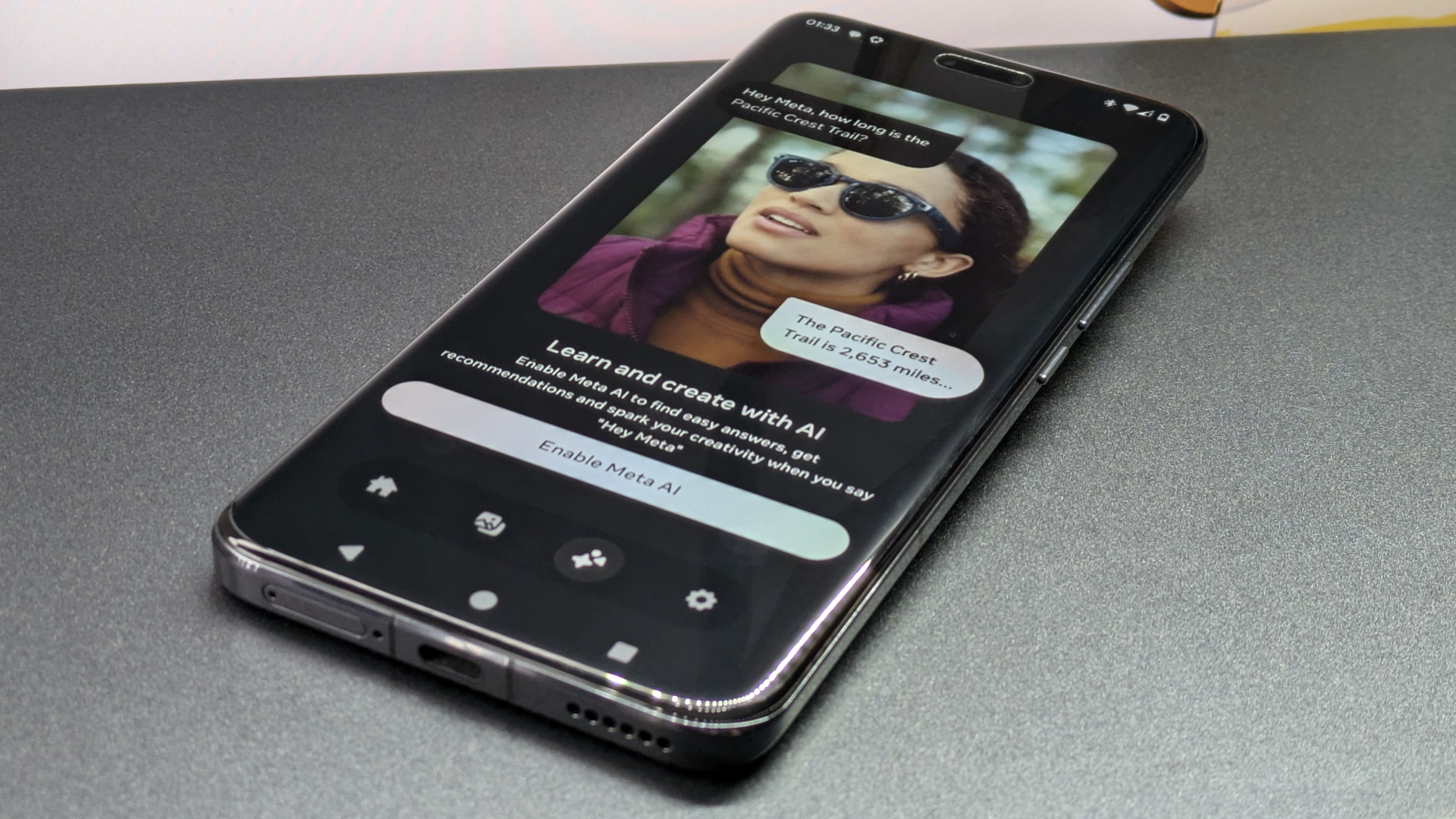
Don’t worry — it won’t get all Her on you. Meta AI is rather terse, often choosing to answer your questions in the shortest, simplest way possible. While that’s not great for most AI, it works here. Throughout your day, you’re likely to only call on Meta AI when you need some information or to get something done, so the cutting of the fat is welcome.
That said, Meta AI still communicates in that awkward synthesized text-to-speech manner, which can get a little grating afterward. I’m looking forward to the upcoming voice mode announced at Meta Connect 2024 and the celebrity tenors that come with it. I can’t wait for John Cena to wax lyrical about the pigeon fowl to my dwindling number of friends.
Other features expected to arrive soon include remembering things from images, setting reminders, sending voice memos, and real-time video help that lets the assistant answer and comment based on everything it can see.
Not only that, Meta’s smart glasses will be able to translate speech in real-time, a feature similar to that of the Solos AirGo 3 smart glasses with their ChatGPT-backed translation capabilities. If I’m lucky, I’ll finally be able to figure out what my Bulgarian neighbors really think of me.
Ray-Ban Meta Smart Glasses: Software
Using the Ray-Ban Meta smart glasses requires linking them via Bluetooth to a smartphone using the Meta View app. The app is available on iOS and Android, and the experience is practically identical.
There’s not a great deal to write home about regarding the Meta view app. It’s pretty straightforward in what it does, giving you a record of Meta AI conversations to call back on and access to the glasses’ 32GB of onboard storage to transfer media to your smartphone. Frustratingly, you cannot stream the images from the glasses and will instead need to transfer them to your device before seeing them in full.
Beyond this, Meta View is a way to ensure the firmware of your glasses is up to date and tweak any settings or gestures you wish to use. Unfortunately, gestures are limited to accessing only a select few apps. While Meta intends to expand on these, for now, all you’ll get is quick access to apps like Spotify or Amazon Music.
However, while the app is open on your phone, you can stream from the Ray-Ban Meta smart glasses to Facebook and Instagram and even use your first-person perspective in WhatsApp or Facebook Messenger calls.
Ray-Ban Meta Smart Glasses: Battery life
It’s all been rather positive up until now, even with the weird liminal first-person photography comments. However, no device is perfect. The Ray-Ban Metas struggle in one key and vital area: battery.
Equipped with a paltry 154 mAh battery capacity, perhaps these glasses were doomed from the start. Great in quick bursts, but having the stamina of a marshmallow atop a naked flame.
Leave them on without much use, and battery life will trickle down at a relatively acceptable pace, but start taking pictures, listening to music, or interacting with Meta AI, and you’ll notice a sharp drop in battery life.
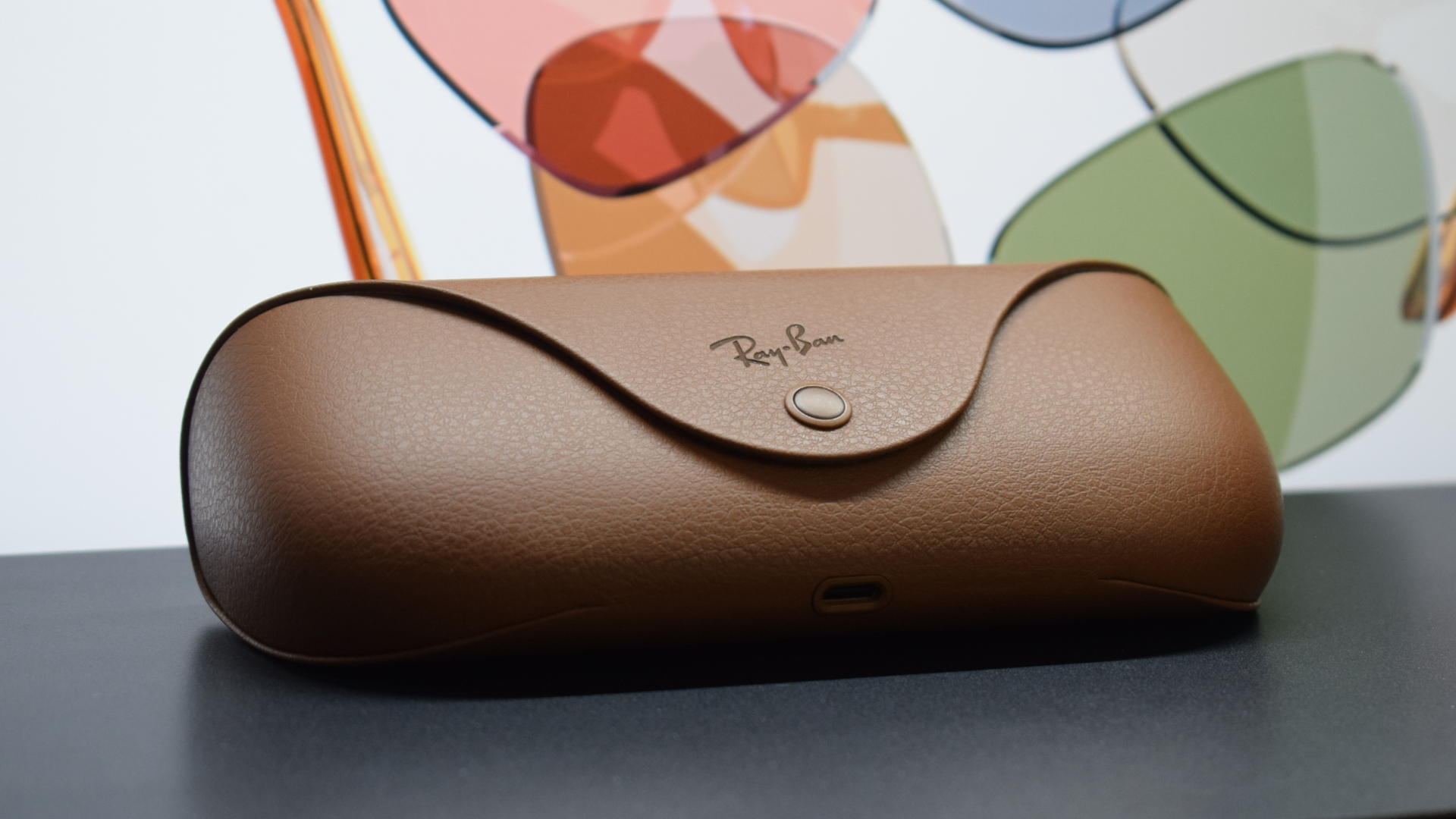
The Ray-Ban Metas struggle in one key and vital area: battery.
You can reduce its background battery drag by turning off Meta AI’s always listening stance, instead relying on a three-finger tap to the right temple to activate chat. But there’s no real way to cut down on the incredible draw of other activities.
As mentioned much earlier in this review, I’ve begun to leave the glasses off for most of the time while wearing them, only turning them on when I actively want to engage with their wider functions. The blessing of smart glasses like these is that even when they’re turned off, or the battery has run out, they’re still excellent glasses.
Using this method, I can eke out a full day’s use most of the time. However, leaving them on, being a bit more indulgent when it comes to their features, I’m likely to get around 3-4 hours of usage. However, if you plan on tackling an entire Spotify playlist while you get to work, that number will drop again to 2-3 hours depending on volume. Capturing videos will burn the wick even faster.

The blessing of smart glasses like these is that even when they’re turned off or the battery has run out, they’re still excellent glasses.
Still, there is a positive. Meta’s smart glasses come with a charging case that not only protects your expensive frames but also keeps them juiced up on the go. It can deliver a full charge in about an hour and 15 minutes or reach 50% in around 25.
The case itself takes around 3-4 hours to charge over USB-C, and when fully charged, it can top your glasses up to full, maybe four or five times, depending on what level you’re charging from.
Bottom line
The Ray-Ban Meta smart glasses are often, in my opinion, incorrectly dubbed as “social media” or influencer glasses — potentially due to their ability to share media and livestream to platforms like Facebook or Instagram and its portrait-orientated output. But there’s more going on with this product than food selfies and being able to use both hands while recording video.

I’ve never seen a pair of Ray-Ban Wayfarers that I didn’t like, and these smart glasses are no exception.
They’re a transitional product, leading the way from what glasses are to what glasses could be. Better still, they manage this while looking unobtrusive. In fact, they’re downright cool. I’ve never seen a pair of Ray-Ban Wayfarers that I didn’t like, and these smart glasses are no exception.
My kingdom for added battery life, but the charging case is an absolute blessing, and I’ll often use it to squirrel away my previous frames while the Ray-Ban Metas are in use, switching between the two as needed.
While its battery life is difficult to defend, outside of the obvious constraints of everything needing to fit into a stylish form, there’s still so much to praise. My time with Meta’s smart glasses has been a treat, and when it comes time to hand them back over, one of the first purchases I make will be to replace them with a pair of my own.
More from Laptop Mag

Rael Hornby, potentially influenced by far too many LucasArts titles at an early age, once thought he’d grow up to be a mighty pirate. However, after several interventions with close friends and family members, you’re now much more likely to see his name attached to the bylines of tech articles. While not maintaining a double life as an aspiring writer by day and indie game dev by night, you’ll find him sat in a corner somewhere muttering to himself about microtransactions or hunting down promising indie games on Twitter.

